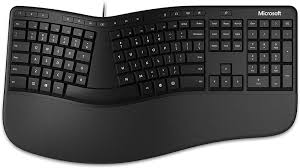Ergonomic keyboards are designed to address the physical discomfort associated with prolonged typing. By promoting better posture and reducing strain, these keyboards can enhance both comfort and productivity.
1. Key Features of Ergonomic Keyboards: Ergonomic keyboards often feature split layouts, which allow users to position each half of the keyboard at a comfortable angle. Tented designs elevate the center of the keyboard to reduce wrist strain, while cushioned wrist rests provide additional support.
2. Reducing Repetitive Strain Injuries: By promoting a more natural typing posture, ergonomic keyboards can help prevent repetitive strain injuries such as carpal tunnel syndrome. The design encourages users to keep their wrists straight and reduce unnecessary strain.
3. Improving Typing Efficiency: An ergonomic keyboard can improve typing efficiency by reducing discomfort and fatigue. Users may find that they can type for longer periods without experiencing the same level of strain or discomfort as with traditional keyboards.
4. Customization and Adaptability: Many ergonomic keyboards offer customization options, such as adjustable split angles and detachable wrist rests. This adaptability allows users to find the most comfortable setup for their individual needs.
5. Choosing the Right Ergonomic Keyboard: When selecting an ergonomic keyboard, consider factors such as key layout, adjustability, and build quality. It’s important to choose a keyboard that fits your typing style and workspace to maximize comfort and productivity.
Conclusion: Ergonomic keyboards offer a range of benefits for those who spend long hours typing. By investing in a well-designed ergonomic keyboard, you can enhance your comfort and productivity while reducing the risk of repetitive strain injuries.

